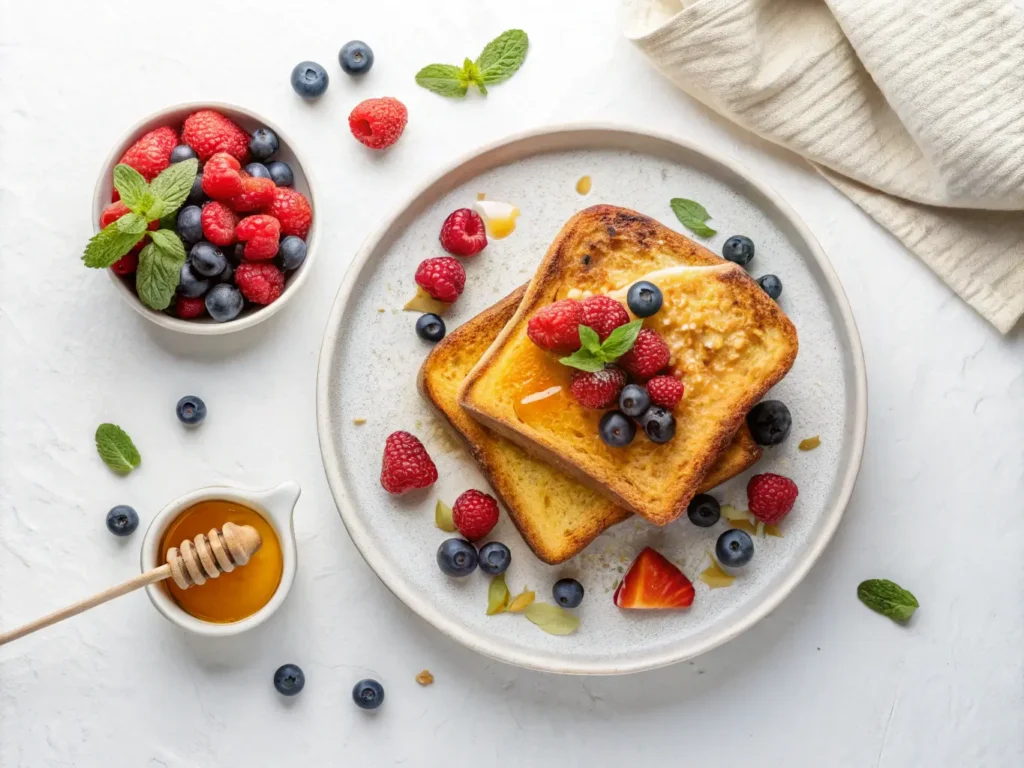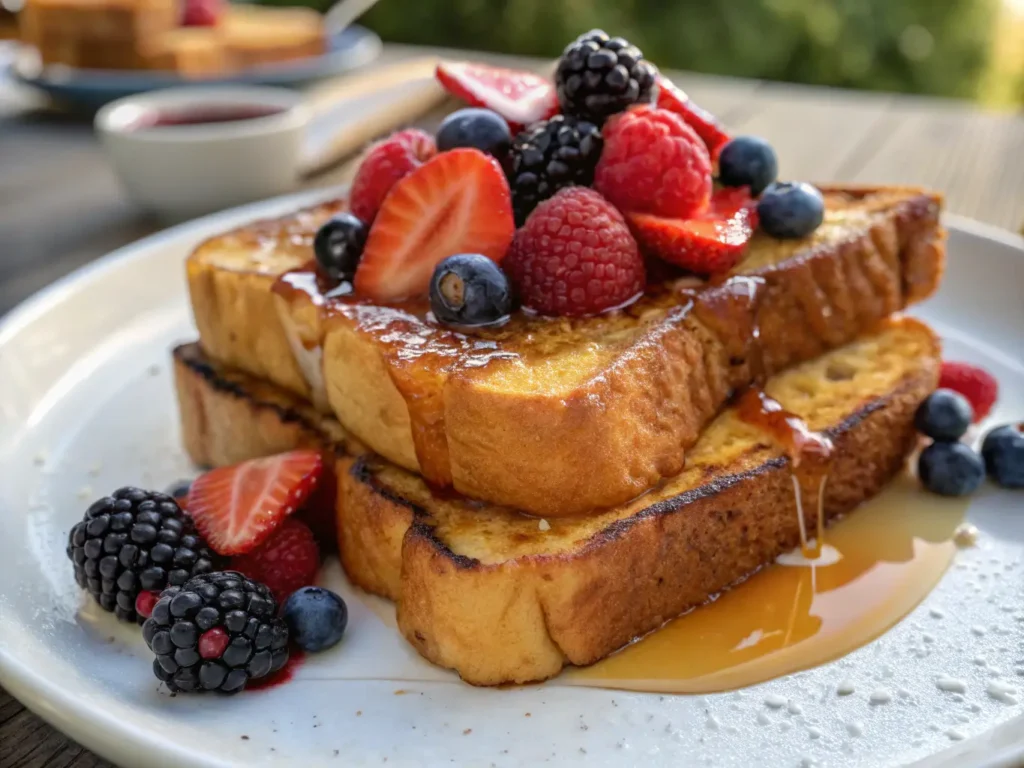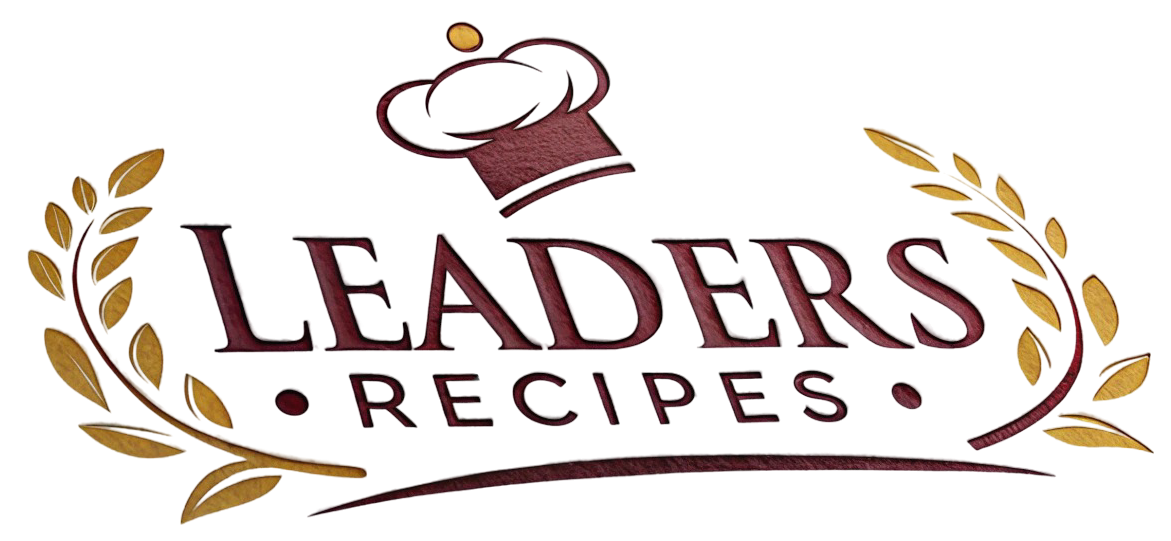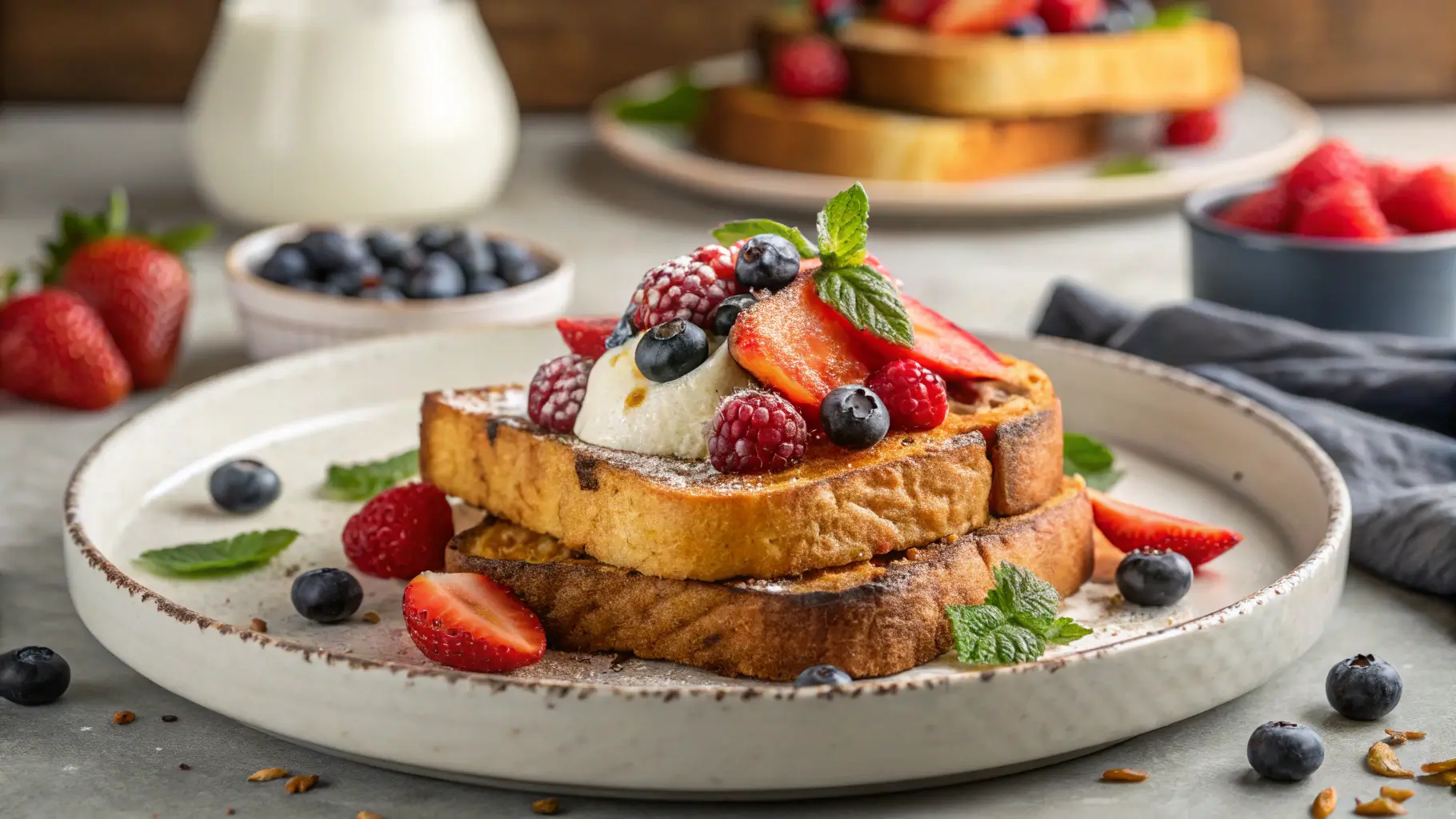Table of Contents
Healthy French toast is a delicious, nutritious twist on the classic breakfast favorite. Traditionally considered a guilty pleasure, French toast can easily be transformed into a wholesome meal without compromising on flavor. In fact, with the right ingredients and simple adjustments, it can become the ideal breakfast to kick-start your day, supporting a balanced diet and fueling you with the necessary energy. Whether you’re looking for a quick and satisfying weekday breakfast or a leisurely weekend brunch, healthy French toast offers an exciting and customizable option for every occasion.
This guide will explore all the details about making healthy French toast—from healthier ingredients, the benefits of a nutritious breakfast, to essential tools and step-by-step instructions. Whether you prefer a simple, classic French toast or a more adventurous version with protein or fruit toppings, this recipe will ensure you get the most out of this iconic dish.
What Makes French Toast Healthy?
French toast is traditionally made with bread, eggs, milk, and sugar, which is then fried in butter. While this combination can make for a decadent treat, it often falls short when it comes to nutrition. By making simple ingredient swaps and being mindful of portion sizes, it’s possible to turn French toast into a healthy, satisfying meal.
Healthier Ingredients
Replacing traditional ingredients with healthier alternatives can significantly improve the nutritional value of French toast. Instead of using white bread, opt for whole-grain or sprouted bread, which is packed with fiber, vitamins, and minerals. Using low-fat milk or plant-based milk (such as almond or oat milk) ensures you get the creamy texture without the extra calories or saturated fats. Instead of refined sugar, try using natural sweeteners like honey or pure maple syrup to provide a healthier, more natural sweetness.
Lower Calories Without Sacrificing Flavor
Reducing sugar, fats, and empty calories is key to making French toast healthy while keeping it flavorful. Adjusting the egg-to-milk ratio allows you to control the richness of the batter. A drizzle of healthy fats, such as olive oil or coconut oil, can replace the usual butter for a crispy texture without the added cholesterol.
Benefits of a Nutritious Breakfast
Starting your day with healthy French toast ensures you’re fueling your body with the right nutrients. By choosing nutrient-dense ingredients, this breakfast can provide a solid foundation for energy levels, metabolism, and overall well-being. Whole grains, proteins, and healthy fats contribute to sustained energy throughout the morning, helping to keep you feeling fuller for longer.

Key Ingredients for Healthy French Toast
Core Ingredients
- Whole-grain or Sprouted Bread: These types of bread are rich in fiber and essential nutrients that help improve digestion and promote heart health. They are the perfect base for a healthy French toast recipe.
- Eggs: Eggs are a rich source of protein and healthy fats. For those looking for a lighter option, you can use egg whites to reduce cholesterol while still getting the protein benefit.
- Milk: Choose low-fat or plant-based milk options such as almond, oat, or soy milk. These alternatives provide creaminess while keeping the calories and fats in check.
- Cinnamon and Vanilla Extract: These natural ingredients infuse your French toast with warmth and depth of flavor. Cinnamon is also known for its antioxidant properties and blood sugar regulation benefits.
Optional Add-Ins for Flavor
- Nutmeg: A pinch of nutmeg can add an aromatic depth to the flavor profile.
- Cardamom: This spice adds a subtle citrusy, floral flavor that complements the sweetness of French toast.
- Orange Zest: Adding a touch of orange zest can introduce a refreshing, citrusy aroma that elevates the entire dish.
- Unsweetened Cocoa Powder: For a rich, indulgent flavor, add unsweetened cocoa powder to the batter. This ingredient is full of antioxidants and enhances the depth of the French toast’s taste.
Natural Sweeteners and Toppings
- Honey: A natural sweetener that adds a touch of sweetness with antioxidants and anti-inflammatory properties.
- Maple Syrup: Pure maple syrup is an excellent choice for those looking for a more refined sugar alternative.
- Fresh Fruit: Topping your French toast with fresh berries, bananas, or citrus fruits adds both flavor and essential vitamins.
- Greek Yogurt: Greek yogurt adds protein and creaminess, making it an ideal topping to enhance the dish’s nutritional profile.
- Nut Butter: Almond or peanut butter not only adds flavor but also provides healthy fats and protein, making the meal more filling.
Equipment Needed for Healthy French Toast
Essential Tools
- Mixing Bowl: A large mixing bowl is needed for whisking the batter and combining ingredients.
- Whisk: For blending the eggs, milk, and spices to achieve a smooth, lump-free batter.
- Non-stick Skillet or Griddle: A non-stick surface allows you to cook your French toast without excessive butter or oil.
- Spatula: A spatula helps you flip the French toast easily, ensuring even cooking on both sides.
- Measuring Cups: Accurately measuring your ingredients ensures the perfect consistency and flavor.
Optional Accessories
- Electric Griddle: If you’re cooking for a crowd or preparing large batches, an electric griddle provides more cooking space and helps ensure even cooking.
- Serving Plates: Beautiful presentation can elevate the meal, so having attractive serving plates adds to the experience.
Step-by-Step Instructions for Making Healthy French Toast
Step 1: Preparing the Batter
Start by cracking the eggs into a large mixing bowl. Whisk them well to ensure a smooth mixture. Add your choice of milk (dairy or plant-based), followed by cinnamon, vanilla extract, and any additional spices or flavorings such as nutmeg or cardamom. Whisk until everything is well combined. If you prefer a sweeter French toast, you can add a natural sweetener like honey or maple syrup at this stage. Ensure the mixture is smooth and free of clumps.
Step 2: Preparing the Bread
Select your preferred type of bread—whole-grain or sprouted bread is highly recommended for its nutritional benefits. Slice the bread into even pieces, ensuring that each slice is thick enough to hold the batter without becoming overly soggy. Dip each slice of bread into the batter, making sure it is coated evenly on both sides, but avoid oversaturating the bread. Gently shake off any excess batter before moving to the next step.
Step 3: Cooking the French Toast
Heat your non-stick skillet or griddle over medium heat. Lightly grease the pan with a small amount of coconut oil or olive oil. Place the coated bread slices on the skillet, ensuring they are not overcrowded. Cook the French toast for about 2-3 minutes on each side, or until they turn golden brown with crispy edges. You may need to adjust the heat to avoid burning or undercooking.
Step 4: Plating and Topping
Once the French toast is cooked, transfer it to serving plates. Then, top with your choice of fresh fruit, followed by a drizzle of honey or maple syrup, and a dollop of Greek yogurt or a spoonful of nut butter. Additionally, for extra texture and nutrition, sprinkle some chia seeds or hemp hearts on top. Finally, garnish with a dusting of cinnamon for an extra burst of flavor.
Tips for Perfect Healthy French Toast
Choosing the Right Bread
Choosing the right bread is essential for healthy French toast. Whole-grain and sprouted breads are rich in fiber and provide essential nutrients, making them far superior to white bread. These options also help stabilize blood sugar levels, making them the perfect choice for a healthy breakfast.
Avoiding Soggy Toast
The key to avoiding soggy French toast is to avoid over-soaking the bread. Ensure that each slice is only lightly dipped into the batter—this will allow it to cook evenly and maintain a crispy texture. Using a sturdy, thick bread also helps prevent sogginess.
Achieving a Perfect Texture
To achieve perfectly cooked French toast, ensure that the skillet is heated to the correct temperature—medium heat is ideal. If the pan is too hot, the toast will burn on the outside while remaining raw on the inside. If the pan is too cool, the toast will become too greasy and soggy. Keep an eye on the color of the toast, flipping it when it turns golden brown.
Variations of Healthy French Toast
Protein-Packed French Toast
Add protein powder to the batter or use high-protein bread to increase the nutritional value. This variation is perfect for those who want a breakfast that supports muscle repair and growth.
Vegan French Toast
For a vegan version, replace eggs with flaxseed or chia seeds as a binding agent, and choose plant-based milk such as almond or oat milk.
Gluten-Free French Toast
Use gluten-free bread made from rice flour or other gluten-free grains. Ensure all other ingredients, including the milk and sweeteners, are gluten-free as well.
Banana French Toast
Incorporate mashed bananas into the batter for natural sweetness. Bananas provide potassium and other essential nutrients, making them the perfect addition to a healthy breakfast.
Low-Calorie French Toast
For a lower-calorie version, reduce the egg-to-milk ratio, skip the sweeteners, or use sugar-free syrup. Opt for low-calorie toppings like fresh fruit or a dollop of Greek yogurt.
Topping Ideas for Healthy French Toast
Fresh Fruit and Berries
Top your French toast with a variety of fresh fruit, such as strawberries, blueberries, raspberries, or bananas. These fruits add natural sweetness and are packed with vitamins, minerals, and antioxidants.
Nut Butters and Yogurt
Add a dollop of almond or peanut butter for a healthy dose of fats and protein. Greek yogurt is another excellent topping, providing probiotics and extra protein.
Sweeteners and Garnishes
For added sweetness, drizzle a small amount of honey or pure maple syrup over the French toast. Garnish with powdered cinnamon or a sprinkle of chia seeds for extra texture and nutrients.

Meal Prep and Storage Tips
Preparing in Advance
To make mornings easier, prepare the batter the night before and store it in the refrigerator. You can also slice the bread ahead of time so that you can quickly assemble and cook the French toast in the morning.
Storing Leftovers
If you have leftover French toast, store it in an airtight container for up to 3 days in the refrigerator. You can also freeze it for longer storage.
Reheating Instructions
Reheat leftover French toast in the oven at 350°F for 10-15 minutes, or use a toaster for a quick option.
Health and Customization Options
Making it Dairy-Free
Substitute the milk with almond milk, oat milk, or any other dairy-free alternative to make the recipe dairy-free.
Lowering Sugar Content
Use natural sweeteners such as fruit, or opt for unsweetened almond milk to reduce sugar content while still maintaining great flavor.
Adding Superfoods
Incorporate superfoods such as chia seeds, flaxseeds, or hemp hearts into the batter or as toppings to increase the meal’s nutritional value.
Common Mistakes to Avoid
Using the Wrong Bread
Avoid overly soft or fresh bread, as it can lead to soggy results. Stale or slightly dried-out bread works best for French toast.
Overcooking or Undercooking
Ensure that the French toast is cooked through without being too dark or raw in the middle. Adjust the heat as necessary to get the perfect golden brown toast.
Skipping the Right Toppings
Toppings can enhance both the flavor and nutritional value of your French toast. Don’t skimp on these—adding fruit, nut butter, or yogurt can turn a good breakfast into a great one.
FAQs
Can I make French toast without eggs?
Yes, you can use flaxseed meal or chia seeds as a substitute for eggs in French toast. Combine 1 tablespoon of flaxseed meal or chia seeds with 3 tablespoons of water to replace one egg.
How do I store and reheat French toast?
Store cooked French toast in an airtight container in the refrigerator for up to 3 days. Reheat in the oven or toaster for best results.
Can I freeze French toast for meal prep?
Yes, French toast can be frozen for up to 1 month. Place slices in a single layer on a baking sheet to freeze, then transfer to a freezer bag.
What’s the best bread for healthy French toast?
Whole-grain, sprouted, or gluten-free bread are the best choices for a healthy version of French toast. They provide essential nutrients and fiber while maintaining great flavor.
How can I make French toast gluten-free?
Use gluten-free bread and check that all ingredients are gluten-free, including sweeteners and plant-based milk.
Can I make a vegan version of French toast?
Indeed, by using flaxseed meal or chia seeds as egg substitutes and plant-based milk, you can easily create a vegan version of French toast. Furthermore, this variation offers the same delicious flavor and texture as the traditional recipe, while also providing a dairy-free and egg-free alternative.
Conclusion
Healthy French toast is a versatile, nutritious breakfast option that can be easily customized to fit any dietary preference. By swapping traditional ingredients with healthier alternatives, you can create a dish that’s both delicious and nourishing. Whether you enjoy it with fresh fruit, nut butter, or Greek yogurt, this healthy French toast recipe will ensure you start your day off right. Try it today and experience the delightful balance of taste and nutrition!

